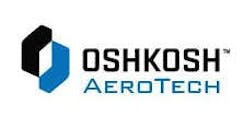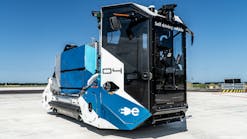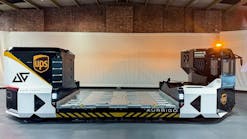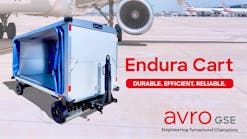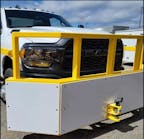Each year, thousands of injuries related to powered industrial trucks or forklifts occur in U.S. workplaces. National fatality data indicate that the three most common forklift-related fatalities involve forklift overturns, workers on foot being struck by forklifts and workers falling from forklifts. The forklift vehicle, the work environment, and actions of the operator can all contribute to injuries or fatal incidents involving forklifts.
Forklift incidents can also involve property damage, including damage to overhead utilities, pallet and storage rack systems, process or sprinkler pipes, building walls, and machinery. Research indicates the majority of employee injuries and property damage can be attributed to a lack of safe operating procedures, lack of enforcement of safe operating procedures, and insufficient or inadequate training on vehicles. The powered industrial truck operator training requirements apply to all industries where trucks are being used, except compressed air or nonflammable compressed gas-operated industrial trucks, farm vehicles, or vehicles intended primarily for earthmoving or over-the-road hauling.
Worker training
A comprehensive safety training program is always one of the most important elements in preventing injuries and death. It is particularly vital to forklift operation, however, because heavy mobile equipment always has the potential to cause injury if not operated properly. Inexperienced or untrained workers can make the fatal mistake of thinking that it just takes common sense or the ability to drive a car to operate a forklift, and because every brand and type of forklift is different all require specific training to operate.
All companies must develop, implement, and enforce a comprehensive written powered equipment safety program that includes worker training, operator licensure, and a timetable for reviewing and revising the program. At a minimum, a forklift safety training program should ensure that workers do not operate a forklift unless they have been trained and licensed.
Remember, training and an operating license — or certification that an operator is qualified to operate that vehicle — are required for every vehicle the employee will be operating, and refresher training or an evaluation of each operator’s performance is required at least once every three years.
Training should cover all aspects of the equipment the worker is going to operate, down to when to set the parking brake. Operator training should also address factors that affect the stability of a forklift — such as driving behavior, the weight and symmetry of the load, the load center based on fork length, driving and parking on an incline, the speed at which the forklift is being driven, type and characteristics of the operating surface, tire pressure, and even the type of tire on the vehicle.
Inform operators of sit-down type forklifts that they can be crushed by the overhead guard or another part of the truck if attempting to jump from the falling or an overturning forklift. The risk of being crushed by the overhead guard or another rigid part of the forklift is greatly reduced if the operator of a sit-down type forklift remains inside the operator's compartment. The operator of a sit-down type forklift should be instructed not to try and jump from the operator's compartment but to stay inside the truck, hold on firmly, and lean away from the point of impact if lateral or longitudinal tip over occurs.
Ensure that operator restraint systems are being used on sit-down type forklifts. Since 1992, forklift manufacturers have been required to equip new sit-down type forklifts with operator restraint systems and some manufacturers of these forklifts offer restraint systems that can be retrofitted on their older vehicles. Many of the fatalities resulting from overturned sit-down (also known as counterbalance) type forklifts might have been prevented if the operator had been restrained. The overhead guard and cage system of the forklift can crush the operator's head or torso after they fall off or jump outside the operator's compartment.
Sometimes a forklift operator might complain about the restraint system on a fork truck and how much they dislike wearing it. A forklift seatbelt is designed to keep the worker inside the protective envelope of the operator’s compartment in case of an accident, is required as part of the vehicle training, and is required for use by the manufacturer and under OSHA requirements – so there is no negotiating when it comes to seatbelt use.
One example of a functioning forklift training program includes classroom instruction and/or an interactive CD-ROM session after which there is a written test on driving theory. After that, a minimum of eight hours of hands-on driving, under the observation of a qualified instructor, is required for each vehicle. On completion, the worker may be issued a temporary license for a probationary period and is under observation for a period that should be established by the employer. During that time, a trainer or the employee’s supervisor can require additional training or rescind the individual’s license.
Forklift inspection and maintenance
Establish a vehicle inspection and maintenance program. Every forklift manufacturer has recommendations for upkeep and premium performance but an inspection by each operator before the start of each shift is critical. Somebody on the previous shift might not want to ‘fess up’ that they had a problem when they were using the vehicle, and unless it is reported, this might lead to problems facing the operator on the next shift.
Lifting personnel
Ensure that workers use only an approved personnel basket and adhere to accepted safety practices and OSHA requirements (e.g., assure the platform is secured to the lifting carriage and forks) for elevating personnel with a forklift. The platform should be protected by steel mesh (between the personnel and hoisting mechanism), have platform rails on the remaining sides as required to be an approved personnel platform, and have a secure locking mechanism on the entrance gate.
OSHA requires that when using a powered personnel lift a means must be provided for personnel on the platform to shut off power to the truck whenever the truck is equipped with vertical only or vertical and horizontal controls for lifting and moving personnel.
Pedestrian traffic
Separate forklift traffic and other workers where possible. This can be done by limiting aisles to pedestrian traffic only or forklifts only. The use of forklifts should be restricted near time clocks, break rooms, cafeterias, and main exits – particularly when the flow of workers on foot is at a peak period (such as at the end of a shift or during breaks).
Install physical barriers where practical to ensure that workstations are isolated from vehicle aisles. Evaluate intersections and other blind corners to determine whether overhead parabolic mirrors will improve the site lines and visibility of forklift operators or workers on foot.
And finally, alert workers when a forklift is nearby. Use horns, backup alarms, and flashing lights to warn workers and other forklift operators in the area. Flashing lights are especially important in areas where the ambient noise level is high.
The higher the population density in an area shared with forklift traffic, the greater the potential for an accident, regardless of how diligent the efforts are to keep everyone safe. I heard of an incident one time in which an office area was located adjacent to an aisle that supported forklift traffic, and as a protective measure, the passage doors to the area were recessed into alcoves which set them back from the aisle and prevented the door from opening into the aisle. Flashing lights were installed outside the door alcoves on the aisle wall with door contact switches that activated when a door was being opened. Flashing indicated that an employee was opening a door to exit. Regardless of these measures, an employee came running out of the office so fast, and looking in another direction, that they ran headfirst into the side of a forklift even though the operator had stopped. In summary, in any location where sudden movement or inattention to surroundings may pose a hazard, the potential of those hazards has to be reinforced to everyone in the area.
Work environment
Ensure that workplace safety inspections are routinely conducted by a person who can identify potential hazards or hazardous conditions. You have to consider actions to protect anyone or anything that could be struck. Potential hazards include obstructions in the aisle, blind corners and intersections, electrical utility equipment, building support columns, and forklifts that travel very near to workstations or workers on foot. The person who conducts the inspections should have the authority to implement prompt corrective actions.
Install workstations, equipment control panels, electrical panels, and process equipment away from an aisle when possible. Do not store material bins, or place materials or storage racks at aisle corners, intersections, or other locations that may obstruct the view of operators or workers at workstations.
Always enforce safe driving practices such as obeying established speed limits, stopping at stop signs, and slowing down and sounding the horn at intersections. And finally, repair uneven surfaces, patch cracks, pay attention to crumbling edges of concrete floors, and note any other defects on loading docks, in aisles and on other operating surfaces.
Remember, safety should not be a priority because priorities can and do change. Safety should be a core value of your company’s personnel and culture; and that means it’s not a choice, but an integral part of what you have to do to get the job done.
Anticipating health and safety issues and taking action to prevent them is a long-term and profitable investment for companies. For more information on industrial hygiene and methods for promoting health and safety in the workplace, as well as a listing of industrial hygiene consultants, please visit the American Industrial Hygiene Association website at www.aiha.org.
Steven K. Fess is senior safety engineer/industrial hygienist, Xerox Corp.


